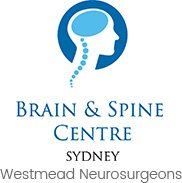Brain Procedures
Acoustic Neuroma Surgery
Acoustic neuroma is a noncancerous, slow-growing tumour usually seen in middle-aged people. It develops on the main nerve leading from the inner ear to the brain, which controls hearing and balance. As the tumour grows and compresses on the brain stem and surrounding nerves it affects related functions and produces symptoms such as ringing in the ears, dizziness, facial weakness, persistent headache and problems with vision.
Burr Holes for Haematoma
A subdural hematoma is bleeding and collection of blood under the dura (outermost protective covering of the brain) as a result of severe injury to the head. The hematoma compresses the surrounding brain tissue causing many neurological symptoms and can even be life-threatening.
Endoscopic Third Ventriculostomy
Endoscopic third ventriculostomy is a procedure for treating hydrocephalus, a condition in which there is abnormal accumulation of cerebrospinal fluid (CSF) in the brain, which increases the pressure in the brain. It is indicated for CSF build-up due to a blockage called aqueductal stenosis.
Insertion of Ventriculoperitoneal Shunt
Cerebrospinal fluid (CSF) is fluid that flows through ventricles or channels across your brain and spinal cord, protecting and transporting important nutrients. Cysts, tumours, or inflammation can block this system and lead to fluid build-up in the brain, increasing the pressure in the brain characterised by a harmful condition called hydrocephalus, which can damage the brain.
Posterior Fossa Decompression
Posterior fossa decompression is a surgical procedure to release pressure in the brain by removing a part of the bone at the base of the skull or sometimes the upper spine. The procedure is recommended for the treatment of tumours, cerebral strokes, bleeds and chiari malformation (structural defects in the cerebellum).
Transphenoidal Removal for Pituitary Tumour
The pituitary gland is a pea-sized structure located at the base of the brain. It functions by producing hormones that control or regulate various functions of the body such as growth, metabolism, sexual development and reproduction.
Pituitary adenomas are noncancerous tumours that form in the pituitary gland. These tumours cause hormonal imbalance in the body by either secreting excessive levels of a particular hormone or more than one type of hormone.
DBS (Deep Brain Stimulation) Surgery for Parkinson’s Disease
Deep brain stimulation (DBS) is a surgical procedure used to treat a variety of disabling neurological symptoms—most commonly the debilitating symptoms of Parkinson’s disease (PD), such as tremor, rigidity, stiffness, slowed movement, and walking problems. The procedure is also used to treat essential tremor, a common neurological movement disorder. At present, the procedure is used only for patients whose symptoms cannot be adequately controlled with medications.
Craniotomy and Repair of Anterior Cranial Fossa Floor
The anterior cranial fossa is the front region of the floor of the cranial cavity that lies over the orbital and nasal cavity. An injury in this region can cause fluid from the brain to drain to the nose. Repair of this region can be performed by making an opening in the skull called a craniotomy.
Craniotomy for Evacuation of Intracranial Haematoma
An intracranial hematoma is a collection of blood within the skull that can occur due to rupture of a blood vessel. A craniotomy is an opening of a section of skull that may be performed to remove a large hematoma.
Craniotomy and Resection of Intrinsic Lesion
An intrinsic lesion within the brain can be removed surgically by performing an operation called a craniotomy which involves removal of a section of the skull.
Elevation of Depressed Skull Fracture
A skull fracture can result in a fragment of skull compressing or damaging the brain and its blood vessels. Elevation of the depressed skull fracture is a procedure to reposition and stabilize the bone fragments.
Intracranial Pressure Monitoring
Intracranial pressure monitoring is performed to check the pressure within the cranial cavity. A small probe connected to an electronic device is inserted through a hole in the skull to monitor the pressure.
Insertion of External Ventricular Drain
A drain may be placed to manage excess pressure or fluid within the brain cavities when the normal flow of fluid is obstructed. The drain passes through a small hole made in the skull and is connected to a drainage bag.
Stereotactic Biopsy of Cerebral Space Occupying Lesion
This is a procedure to obtain a sample of tissue from a lesion within the brain. A biopsy needle is inserted through a hole in the skull and guided to the lesion with the help of navigational imaging techniques.




